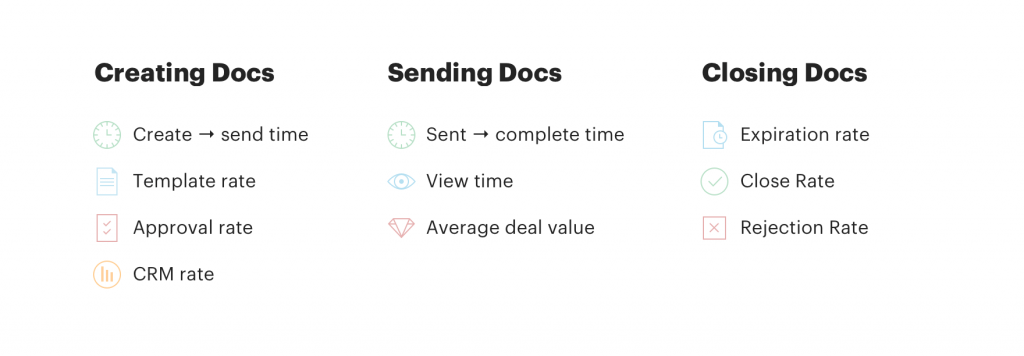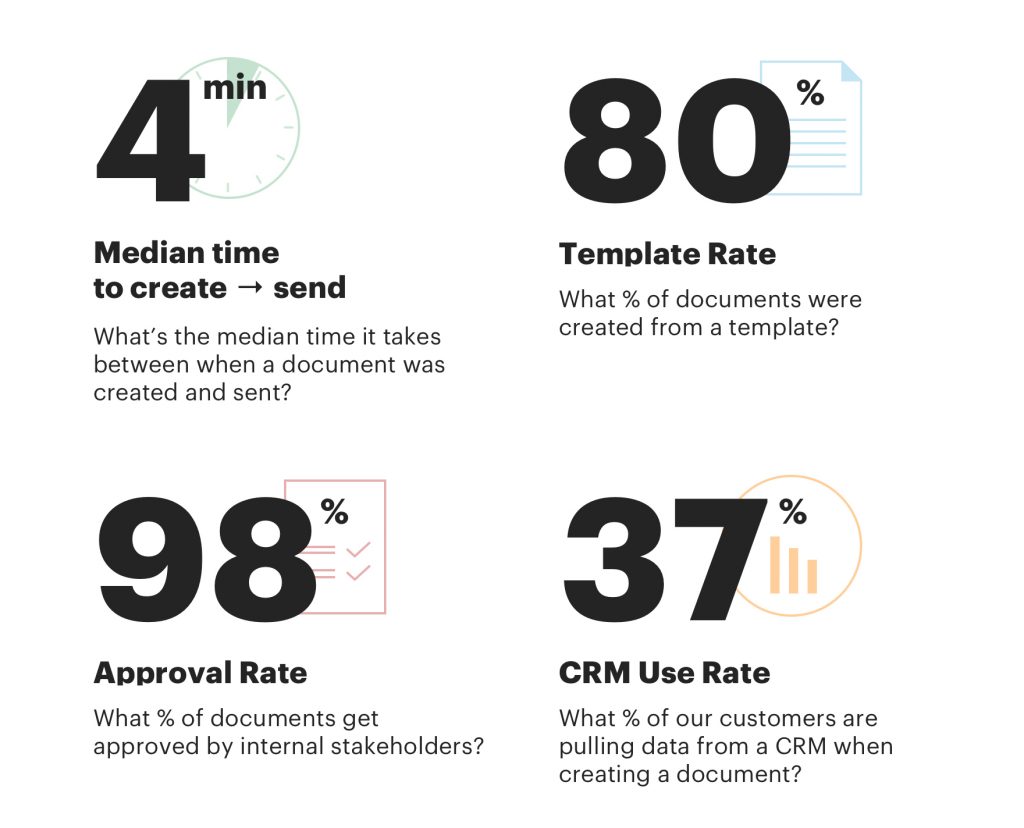10 benchmarks for comparing your business document workflows against PandaDoc customers

Have you ever wanted to know how your business stacks-up against your peers?
Here at PandaDoc, we think a great place to start that evaluation is by measuring your business documents. More specifically, we believe you need to evaluate your entire document process - from creation to close.

But in order to effectively measure how your docs flow, you need some reliable industry benchmarks to compare yourself with.
Or else, what’s the point?
That’s why we aggregated the data from our 17,000+ customers across 10 key metrics that we can accurately and reliably measure inside of our platform.
The hope is that with these benchmarks, you can identify gaps and make adjustments to your sales organization and become more efficient. Having insights into what’s happening with your documents is important. But knowing why it’s happening is even more powerful.
Without further ado, here are the 10 metrics we gathered and analyzed from our PandaDoc customers that you can also try measuring within your own organization.
Which area does your team need to improve the most?
Benchmarks for creating documents:
The steps around document creation and approval can have some serious setbacks and bottlenecks. For PandaDoc users, they heavily rely on templates in order to increase brand control and approval rates. The result is a faster, smoother document creation process.
So, let’s take a look at how fast the typical PandaDoc customer creates and approves docs.

|
Ask yourself: How quickly is my team typically creating and approving documents? New PandaDoc users typically decrease document creation time by 65%, saving about 12 hours a week. A total of 6.6 million documents were created by PandaDoc users in 2019. |
Other things to consider
- Which teams are involved during document creation?
- Are they using brand-approved templates?
- What software(s) are they using?
Benchmarks for sending documents:
Creating documents is one thing. But getting them out the door and in front of the prospect is a whole different ball-game. At PandaDoc, insights are everything. Our users always know when a recipient opens, views, comments, or completes the document.
So, let’s take a look at what and how PandaDoc users are sending their documents.

|
Ask yourself: What insights do I have into how my documents perform once they get sent? PandaDoc users have access to robust document analytics and real-time notifications that make them better sellers. On average, when they send a document, it gets closed in less than one day. |
Other things to consider:
- How/where are you communicating about your docs with prospects?
- Are you tracking doc engagement?
- What are you doing about poorly performing documents?
Benchmarks for closing documents:
Creating and sending documents is great. But actually closing a deal is what we’re here to help with. PandaDoc customers do this by keeping expiration and rejection rates low while sustaining solid close rates.

|
Ask yourself: Am I able to reliably measure these rates through my current document process? New PandaDoc users usually decrease their time to close by 30% and increased the number of closed deals by 2x in the first 2-3 months. |
Other things to consider:
- Can you analyze which documents are succeeding?
- What is a close rate you would like to strive for?
- Where are your wins?
You Pandas have cool data, but now what?
The processes behind creating, sending, and closing documents say a lot about a company.
But what happens if they don’t know the nitty-gritty details like document rejection rate or template use rate?
Look, we don’t have a crystal ball for your company. But we know from our 17,000+ customers that the inability to resolve these simple workflow steps for their sales team actually means two things.
- Inconsistent rep performance.
- Decreased revenue predictability.
Don’t believe us?
Well, maybe these stats will change your mind.
New PandaDoc users decrease their time to close by 30% in the first 2-3 months.
New PandaDoc users increased the number of closed deals by 2x in the first 2-3 months.
If you’re still not convinced of the importance of the document process, try thinking about it like this. What happens if you take the best salespeople in the world and drop them into a business with a mediocre process?
They might do OK.
But, what about if you drop the best salespeople into a well-oiled sales process? Working smarter, instead of harder.
You might be surprised at how the small details result in major victories for your entire revenue organization.
![[Research] 5 ways to increase the close rate of your proposal](https://public-site.marketing.pandadoc-static.com/app/uploads/sites/3/Cover_5-surprising-data-points-to-close-proposals-fast_opt-1-1-339x176.jpg)

